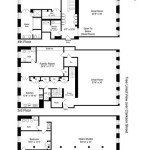What Is a Site Elevation Planner?
A site elevation planner (SEP) is a valuable tool for architects and engineers to design buildings and structures that are compliant with local building codes and regulations. The SEP helps professionals determine the appropriate elevations for building components, such as foundations, floors, and roofs, to ensure the structure's functionality and safety.
Key Aspects of a Site Elevation Planner
1. Topography: An SEP considers the existing topography of the land, including the elevation changes and slopes. This information helps determine the foundation's depth, the height of the structure, and the need for retaining walls or other site features.
2. Building Codes: The SEP incorporates the requirements of local building codes, which specify minimum floor elevations to prevent flooding and other hazards. It ensures that the building's elevation is compliant, reducing the risk of structural issues or legal liability.
3. Drainage: A proper SEP considers the natural drainage patterns of the site. It helps design drainage systems that effectively move water away from the structure and prevent water damage, erosion, or flooding.
4. Accessibility: SEPs are crucial for ensuring accessibility for people with disabilities. The planner determines the appropriate elevations for ramps, stairs, and doorways to comply with accessibility standards.
5. Environmental Impact: The SEP can help mitigate the environmental impact of the structure by considering factors such as solar orientation, prevailing wind patterns, and floodplains. Proper elevation planning can reduce energy consumption, improve indoor comfort, and protect sensitive ecosystems.
Benefits of Using a Site Elevation Planner
1. Compliance: An SEP ensures that the building design meets regulatory requirements and helps avoid potential legal issues or construction delays due to non-compliance.
2. Functionality: A well-planned elevation allows for proper drainage, accessibility, and efficient use of space.
3. Safety: The SEP determines appropriate elevations to protect the structure from flooding, erosion, and other hazards.
4. Cost Savings: Avoiding design errors and rework can save time and resources during construction and prevent costly repairs in the future.
Conclusion
A site elevation planner is an essential tool for architects and engineers to design safe, functional, and code-compliant structures. By carefully considering topography, building codes, drainage, accessibility, and environmental factors, SEPs provide a strong foundation for successful building projects.

Site Plan Static Color Elevation And 7 Views Along A Street Scientific Diagram

For Cross Section And Elevation Plans Cedreo

The Difference Between Plans Sections And Elevation Drawings

For Cross Section And Elevation Plans Cedreo

Setting Main Floor Elevation Site Grading

For Cross Section And Elevation Plans Cedreo

How To Draw Building Elevation From Floor Plan In Archicad

Precise Site Plans For Commercial Property Free Quotations

2d Color Floorplan Renderings And Elevation Drawing Services

Floor Plan Section Elevation Site For City Permit Or Approval Upwork








